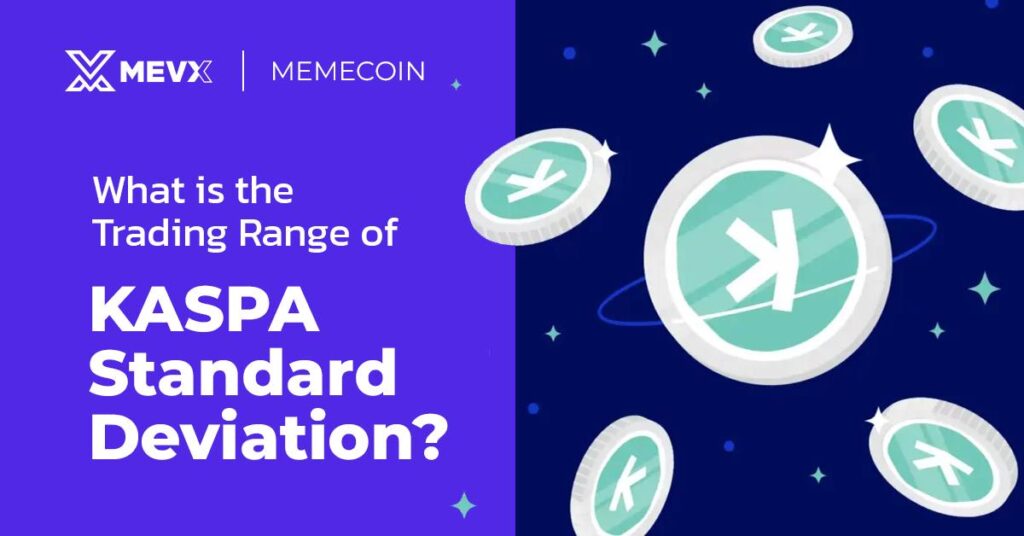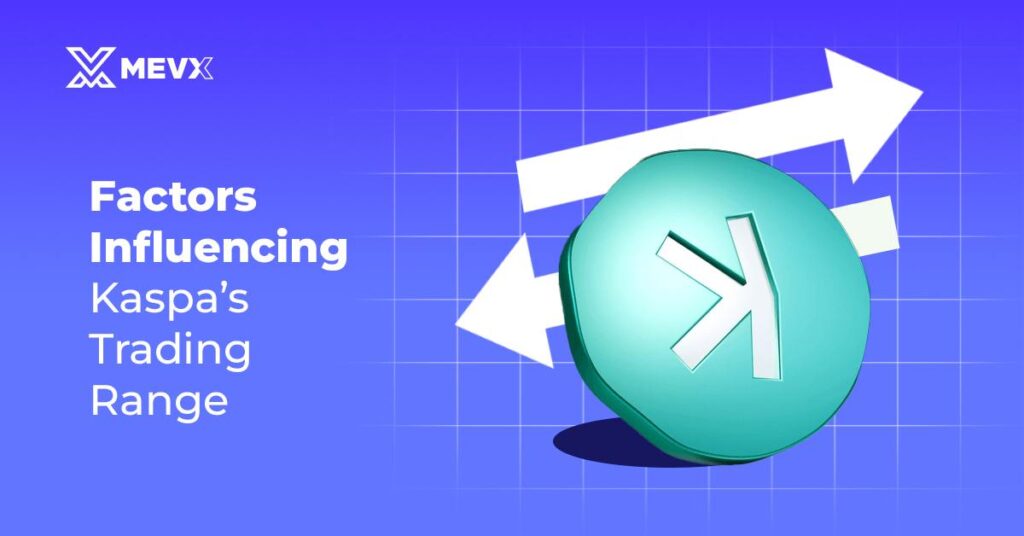Navigating Kaspa’s volatile price movements can be a challenge, particularly for traders looking to capitalize on its fluctuations. Understanding its trading range and standard deviation is essential for making informed trading decisions. By analyzing these factors, traders can gain insight into Kaspa’s price behavior, allowing them to assess volatility and mitigate risk effectively.
This article will provide a comprehensive breakdown of the trading range of Kaspa Standard Deviation, the role of standard deviation in price fluctuations, and how traders can use this knowledge to their advantage.

What is the Trading Range of Kaspa Standard Deviation?
The trading range of Kaspa refers to the difference between its highest and lowest prices over a given period. This range helps traders identify potential buying and selling opportunities, as well as the overall market volatility.
Standard deviation measures how much Kaspa’s price deviates from its average price. A high standard deviation indicates significant price swings, while a low standard deviation suggests a more stable market. Understanding this metric is crucial for traders who want to evaluate risk levels and potential returns before making investment decisions.
Why is Standard Deviation Important in Crypto Trading?
In cryptocurrency trading, standard deviation is a key risk assessment tool. It provides a quantitative measure of market volatility, helping traders anticipate price fluctuations and adjust their strategies accordingly.
- High Standard Deviation: Signals increased volatility, meaning prices can move sharply in either direction. Traders may need to be cautious and use protective measures like stop-loss orders.
- Low Standard Deviation: Suggests lower price fluctuation, indicating a more predictable trading environment. This is beneficial for long-term investors seeking stability.
By analyzing standard deviation, traders can assess how much Kaspa’s price is likely to move in either direction and adjust their risk exposure accordingly.
Factors Influencing Kaspa’s Trading Range
The price fluctuations of Kaspa, reflected in its trading range, are influenced by several key factors. Investor sentiment is a major driver, with positive news often boosting the price and negative news causing declines. This sentiment can significantly impact the trading range of Kaspa standard deviation, as changes in perception lead to increased volatility.
Liquidity and trading volume also play a critical role. A higher volume of trades usually leads to more stability, while low liquidity can result in wild price swings, making Kaspa’s price more vulnerable to manipulation. Global market trends, especially movements in major cryptocurrencies like Bitcoin, often cause Kaspa’s price to follow similar patterns, further affecting its trading range.
Additionally, algorithmic trading has become increasingly prevalent. Automated bots that react to price changes in real time can exaggerate fluctuations, contributing to a broader trading range. During high-volatility periods, these factors can lead to a wider trading range of Kaspa standard deviation, reflecting the heightened uncertainty in the market.

How to Use Standard Deviation for Kaspa Trading Strategies
1. Identifying Buy and Sell Signals
By analyzing standard deviation alongside Kaspa’s historical price data, traders can identify optimal entry and exit points.
- When the price is significantly below the mean (after a sharp decline), it may indicate a buying opportunity if market conditions support a potential recovery.
- When the price is significantly above the mean, it could be a selling opportunity, signaling that the asset is overbought and may undergo a correction.
2. Implementing Risk Management Strategies
Managing risk is crucial when trading volatile assets like Kaspa. Traders can use stop-loss orders and position sizing techniques to protect their investments.
- Stop-loss orders: Automatically sell Kaspa if the price drops below a predetermined level, preventing major losses.
- Position sizing: Adjusting the amount of Kaspa invested based on risk tolerance. For high standard deviation periods, traders might reduce exposure to mitigate risk.
3. Volatility-Based Trading Approaches
- Bollinger Bands Strategy: Bollinger Bands use standard deviation to identify overbought and oversold conditions. When Kaspa’s price touches the lower band, it may signal a buying opportunity, while touching the upper band may suggest a selling opportunity.
- Mean Reversion Strategy: This strategy assumes that Kaspa’s price will eventually revert to its mean after a significant deviation. Traders look for extreme price movements and take positions accordingly.
Where to Buy and Sell Kaspa?
To trade Kaspa effectively, choosing the right exchange is essential. Some of the most reliable platforms for buying and selling Kaspa include:
- Binance – A well-known exchange with high liquidity and advanced trading tools.
- KuCoin – Offers trading pairs for Kaspa with multiple fiat and crypto options.
- Kraken – Provides a secure platform with strong regulatory compliance.
- Gate.io – Popular among traders for its wide range of cryptocurrencies.
Before selecting an exchange, consider factors like security, transaction fees, and ease of use.
Kaspa Trading Tips for Beginners
If you’re just starting with Kaspa trading, it’s important to take a cautious and informed approach. First, begin with a small investment. This allows you to get a feel for the market without exposing yourself to too much risk. As you gain experience, you can gradually increase your investment.
Choosing secure and reliable trading platforms is another key step. Make sure the exchange you use has strong security measures in place to protect your funds. It’s also wise to diversify your portfolio by investing in a range of cryptocurrencies, rather than putting all your money into Kaspa or any single asset. This can help manage risks more effectively.
Stay updated with the latest market news and technical indicators, including the trading range of Kaspa standard deviation. Understanding how much Kaspa’s price fluctuates over time can give you valuable insights into its volatility, helping you make better trading decisions. Finally, always have an exit strategy. Know when you plan to sell to lock in profits and minimize potential losses. This will help you navigate the market with more confidence.
Using Standard Deviation to Trade Kaspa Effectively
Understanding the trading range of Kaspa and how standard deviation influences price movements is crucial for traders looking to navigate the market effectively. Standard deviation provides valuable insights into volatility, helping traders identify optimal buy/sell opportunities and manage risk efficiently.
By incorporating statistical analysis, risk management strategies, and market sentiment evaluation, traders can make more informed decisions and increase their chances of success in the dynamic world of cryptocurrency trading.
As always, remember that crypto trading carries inherent risks, and no strategy guarantees profits. Conduct thorough research, stay updated on market trends, and approach trading with a disciplined mindset to enhance your long-term success in Kaspa trading.
In conclusion, understanding the trading range of Kaspa standard deviation is key to effectively navigating its volatility. By leveraging this statistical tool, traders can better assess price fluctuations, identify trading opportunities, and manage risks. However, always remember that cryptocurrency trading involves risks, and no strategy ensures success. Stay informed, maintain a disciplined approach, and use these insights to enhance your trading experience in the Kaspa market.
Keep staying ahead for more insights and experience in the world of cryptocurrency at Blog MevX!
Share on Social Media:
